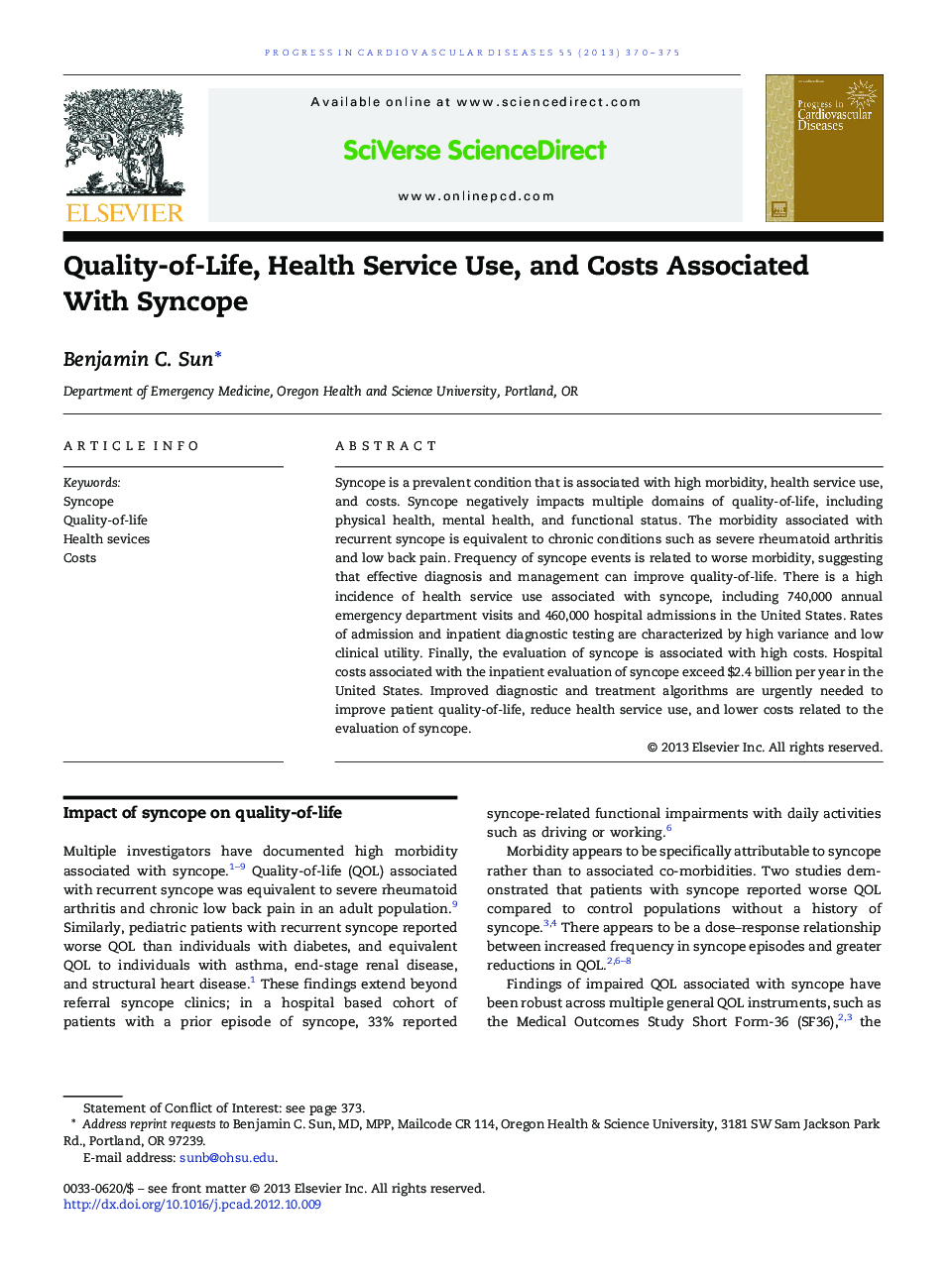| Article ID | Journal | Published Year | Pages | File Type |
|---|---|---|---|---|
| 3006492 | Progress in Cardiovascular Diseases | 2013 | 6 Pages |
Syncope is a prevalent condition that is associated with high morbidity, health service use, and costs. Syncope negatively impacts multiple domains of quality-of-life, including physical health, mental health, and functional status. The morbidity associated with recurrent syncope is equivalent to chronic conditions such as severe rheumatoid arthritis and low back pain. Frequency of syncope events is related to worse morbidity, suggesting that effective diagnosis and management can improve quality-of-life. There is a high incidence of health service use associated with syncope, including 740,000 annual emergency department visits and 460,000 hospital admissions in the United States. Rates of admission and inpatient diagnostic testing are characterized by high variance and low clinical utility. Finally, the evaluation of syncope is associated with high costs. Hospital costs associated with the inpatient evaluation of syncope exceed $2.4 billion per year in the United States. Improved diagnostic and treatment algorithms are urgently needed to improve patient quality-of-life, reduce health service use, and lower costs related to the evaluation of syncope.
